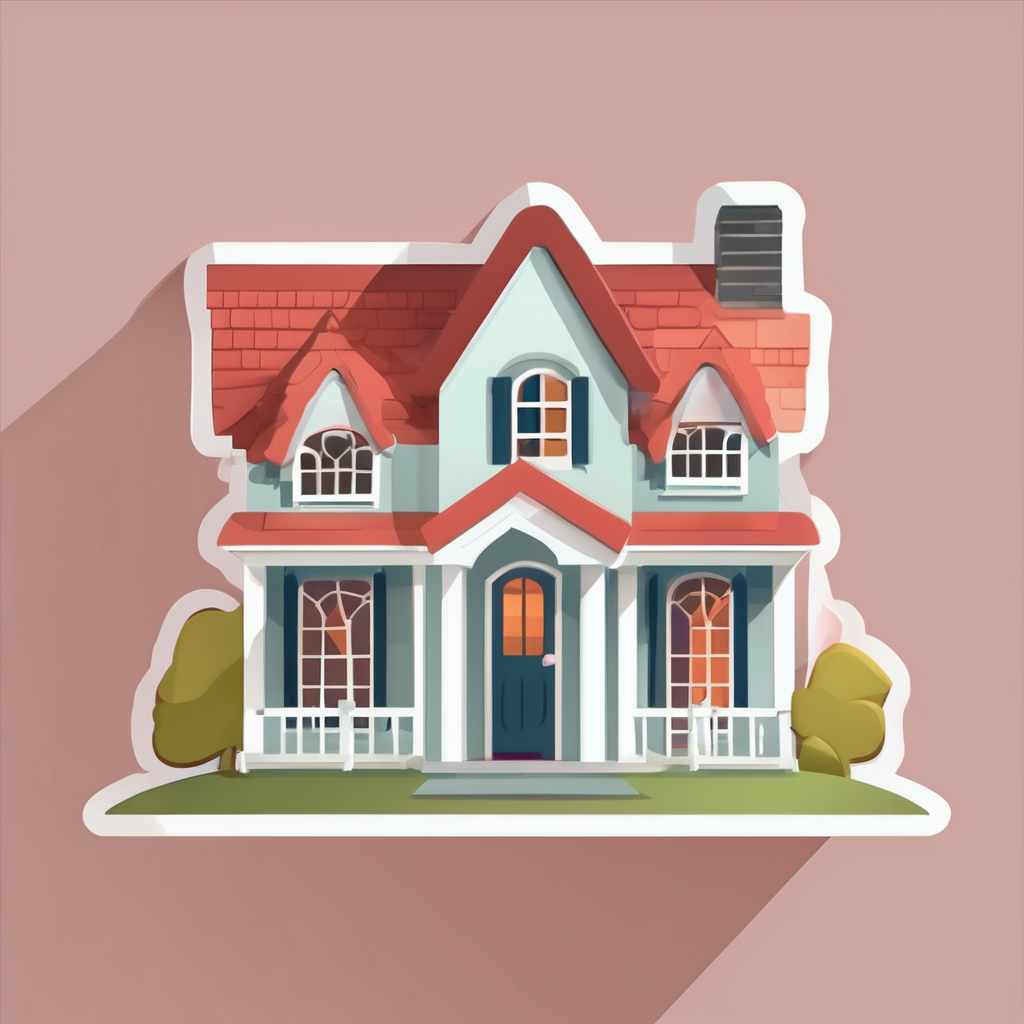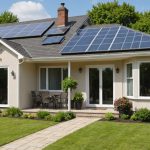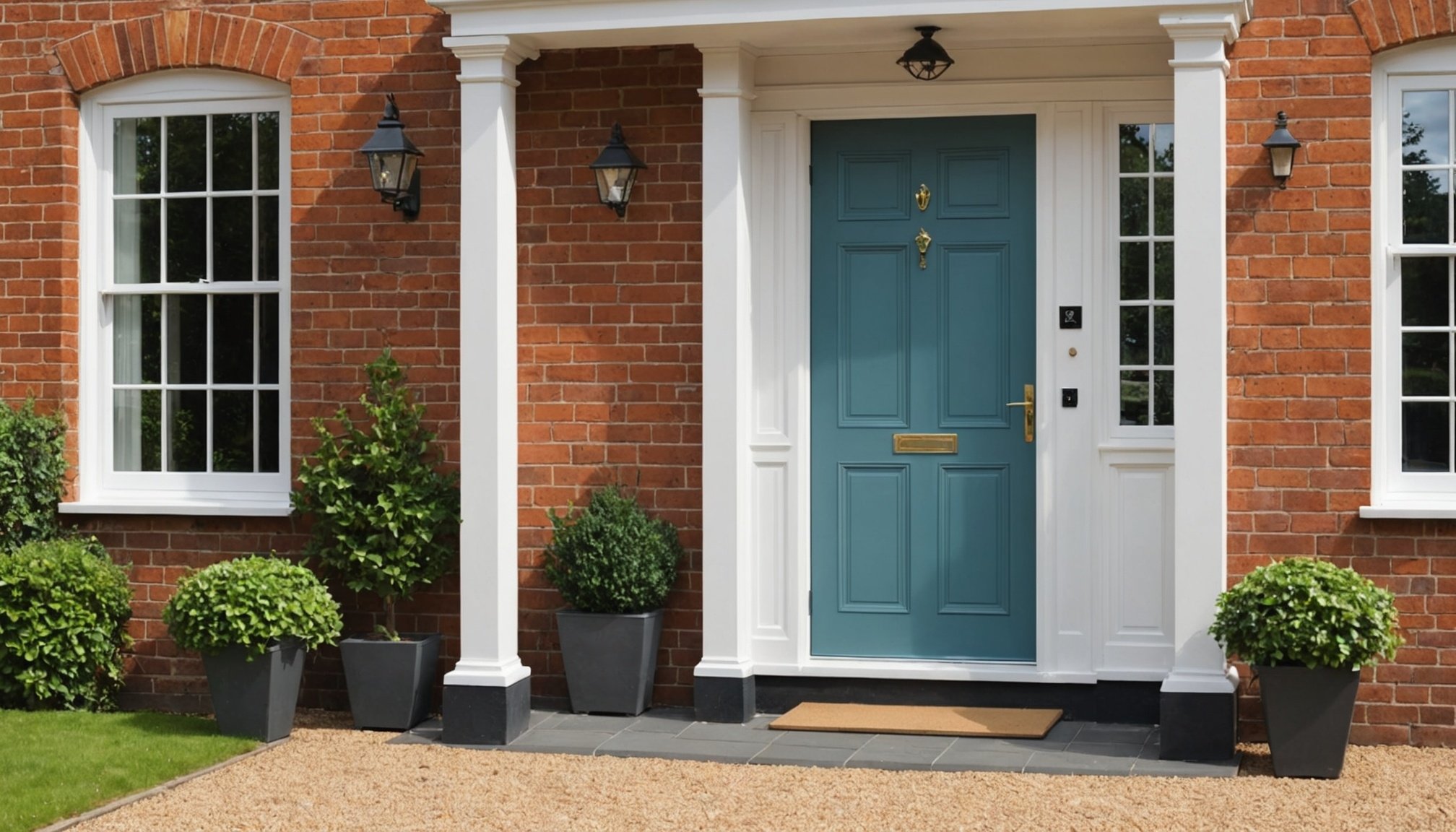Smart Entryway Solutions Overview
Smart entryway solutions are revolutionizing how homeowners can reduce heat loss and boost energy efficiency. These strategies aim to tackle the challenge of significant energy loss occurring at doorways, which often act as conduits for warm air to escape and cold air to infiltrate a home. Such loss negatively impacts the home’s efficiency, leading to higher heating costs and increased carbon footprint.
For UK homeowners, addressing heat loss through smart entryway solutions is not merely a trend but a necessity. The importance lies in minimizing utility bills and preserving environmental resources. By integrating smart technology, like advanced insulation, seals, and weather stripping, homeowners can significantly cut down on unwanted energy loss.
Also read : Seamlessly Blend Smart Lighting into Your UK Home: A Homeowner’s Guide to Integration
The benefits are multifold: not only can homeowners expect immediate reductions in heating costs, but they will also enjoy a more comfortable living environment. With the cold UK climate, effective measures like these are essential. Enhancing entryways with smart technology ensures a warmer, greener home, reflecting a forward-thinking approach to both household management and environmental responsibility. By adopting these solutions, homeowners find themselves better equipped to handle the demands of modern energy practices.
Smart Technology for Entryways
Harnessing smart technology for entryways can transform your home’s energy efficiency and security. These technologies not only enhance convenience but significantly bolster your doorway’s thermal shield against the harsh UK climate.
This might interest you : Finding the Perfect Mattress for UK Weather: Your Ultimate Guide to Comfort and Adaptability
Smart Door Choices
Choosing smart doors means opting for advanced insulation that keeps heat where it belongs—inside your home. These doors often feature robust seals and materials specifically designed to minimize thermal transference. But the benefits don’t stop there. Integrated smart locks contribute to energy efficiency by ensuring a tighter seal when locked, reducing drafts and potential heat escape. Moreover, smart doors are frequently compatible with home automation systems, allowing seamless integration with your existing technology. This connectivity enables homeowners to remotely monitor and control entryway settings, enhancing both security and energy efficiency.
Sensors and Climate Control
The integration of temperature sensors in entryways is crucial for optimal climate management. These sensors provide real-time data, informing climate control systems to adjust automatically, saving energy while maintaining comfort. Smart thermostats pair well with smart entryways, offering tailored, efficient heating solutions that adjust based on the sensor’s input, ensuring that your energy consumption is as minimal as possible without compromising warmth.
Smart Lighting Solutions
Navigating the world of smart lighting solutions can profoundly impact energy efficiency in entryways. By integrating technologically advanced lighting options, homeowners can reduce wasteful energy usage while enhancing their home’s ambience.
Energy-efficient lighting is crucial for any smart entryway solution. Options like LED bulbs are designed to provide optimal illumination using significantly less power compared to traditional incandescent lights. These solutions not only last longer but contribute to a home’s overall energy efficiency.
The role of motion sensors is pivotal in this context. Motion sensors ensure lights are only active when needed, automatically turning off when the area is unoccupied. This smart technology minimizes power wastage while maintaining seamless convenience for household members.
Furthermore, integrating smart lighting controls offers transformative benefits. These controls allow homeowners to adjust lighting settings via smartphone apps or home automation systems, enabling precise management of energy consumption. With the ability to schedule and customize lighting patterns, users can maximise energy savings, promoting a sustainable lifestyle.
By adopting these intelligent solutions, not only do homeowners reduce their energy footprint, but they also elevate the functionality and appeal of their entryway spaces.
Energy-Efficient Design Tips
Incorporating energy-efficient designs in entryways is crucial to minimizing heat loss and enhancing thermal performance. A key principle in achieving this is proper insulation. Insulation acts as a barrier to heat exchange, keeping warmth inside during the cold months. It is vital to invest in quality insulation materials for doors and frameworks. These materials prevent drafts and maintain a constant indoor temperature.
Additionally, air barriers play an essential role in thermal management. By sealing gaps and cracks around entryways, air barriers reduce unwanted airflow. This not only improves energy efficiency but also enhances the comfort of your home environment.
Designs should also consider strategic placement and selection of materials. Choose components that offer high resistance to temperature transfer. Combining advanced insulation with effective air barrier systems creates a robust entryway design. This results in greater energy savings and reduced utility bills.
For practical tips, focus on:
- Selecting doors with high R-value insulation
- Ensuring seamless fit of doors to prevent gaps
- Applying weatherproofing strips for additional sealing
By adopting these energy-efficient designs, homeowners can significantly reduce heat loss and boost their home’s overall thermal performance.
Product Recommendations
Introducing the right energy-saving products for your entryway can transform both its energy efficiency and security. Selecting the top smart products is key to maximising performance and utility savings. Start with smart door models renowned for insulation properties.
Top Smart Door Models
In the UK market, smart doors are evaluated for their ability to minimize heat loss through superior insulation. Look for models that feature advanced materials and robust sealing mechanisms. These doors help maintain a stable indoor climate, crucial for reducing heating costs. Consumers often highlight the effectiveness of these products in stopping drafts, with feedback praising their role in overall energy efficiency.
Energy-Efficient Accessories
To complement smart doors, consider energy-efficient accessories such as advanced door seals and weather stripping. These additions enhance the effectiveness of your gateway by ensuring an airtight closure. Furthermore, integrating smart lighting options and sensors, such as motion detectors, aids in reducing unnecessary energy consumption by activating only when needed.
For extra comfort, explore supplementary heating solutions like heating mats or compact heaters. These products provide localized warmth, ideal for minimizing energy usage and maximising the thermal comfort of your entryway. By choosing these products, your entryway solutions lead to a more sustainable and cost-effective home environment.
Installation Tips for Maximum Effectiveness
Maximising the efficiency of your smart entryway solutions hinges on proper installation techniques. Whether you’re taking a DIY approach or opting for professional help, understanding the crucial steps ensures that you reap the full benefits of these advancements.
Begin with smart doors, ensuring that the frame is level and secure to prevent drafts. Seal edges meticulously, as improper sealing can lead to significant heat loss. For a smooth DIY project, follow installation manuals closely and employ tools suited to the specific door material. However, if the installation seems challenging, consider professional installation for guaranteed results.
Choosing between DIY and professional installation involves weighing cost against expertise. DIY projects are often more cost-effective, but professionals can offer peace of mind with their experience, ensuring every aspect is optimised.
Long-term energy efficiency also demands regular maintenance. Periodically check seals for wear and tear, ensuring they remain intact. Inspect smart technology like locks and sensors for operational efficiency. Regular updates to smart systems enhance functionality, keeping your technology at the forefront of energy management.
By adhering to these installation tips, you not only ensure optimal performance but also secure long-term energy savings and enhanced home comfort.











